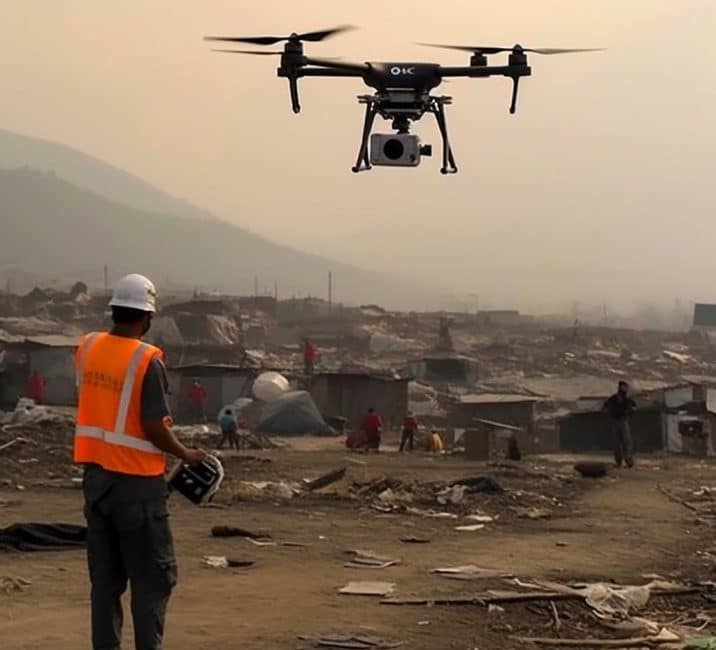Drones play a crucial role in disaster management and emergency response by providing valuable support and assistance to first responders and relief teams. In this article, we will explore the various ways that Professional drones are utilized in disaster situations and the benefits they bring to emergency response efforts.
- Aerial Surveillance and Damage Assessment: Camera drones equipped with high-resolution cameras and thermal imaging capabilities can quickly and effectively survey disaster-affected areas. They can capture real-time aerial footage, allowing emergency responders to assess the extent of the damage, identify potential hazards, and prioritize rescue and recovery efforts. This information helps in making informed decisions and deploying resources efficiently.
- Search and Rescue Operations: Professional drones equipped with thermal cameras and infrared sensors can aid in search and rescue operations by detecting heat signatures and identifying survivors in disaster-stricken areas. They can cover large areas in a shorter time span and access hard-to-reach locations, providing critical information to rescue teams and increasing the chances of finding survivors quickly.
- Rapid Delivery of Supplies and Medical Aid: Professional drones can be used to deliver essential supplies, such as medical equipment, food, water, and communication devices, to disaster-affected areas. This is particularly useful in situations where infrastructure is damaged or inaccessible, enabling faster and more efficient distribution of aid to those in need.
- Communication and Mapping: Drones equipped with communication devices can establish temporary communication networks in areas where existing infrastructure has been compromised. They can serve as mobile communication relays, allowing first responders to coordinate their efforts and maintain contact with each other. Drones can also create real-time maps of affected areas, providing updated information to aid in decision-making and resource allocation.
- Hazardous Material and Environmental Monitoring: Drones equipped with gas and chemical sensors can be deployed to monitor and assess hazardous material leaks and environmental conditions in disaster zones. These Professional drones can help identify potential dangers to both responders and the public, enabling a more effective response and minimizing risks.
- Post-Disaster Assessment and Planning: After a disaster, Professionaldrones can assist in the post-disaster assessment process by capturing detailed imagery and creating 3D models of the affected areas. This information can be used to analyze the impact of the disaster, plan for reconstruction, and evaluate the effectiveness of response strategies for future improvement.
Professional drones have proven to be invaluable tools in disaster management and emergency response. Their ability to provide aerial surveillance, aid in search and rescue operations, deliver supplies, establish communication networks, monitor hazardous materials, and assist in post-disaster assessment significantly enhances the efficiency and effectiveness of emergency response efforts. As drone technology continues to advance, we can expect even greater capabilities and contributions in mitigating the impact of disasters and saving lives.




